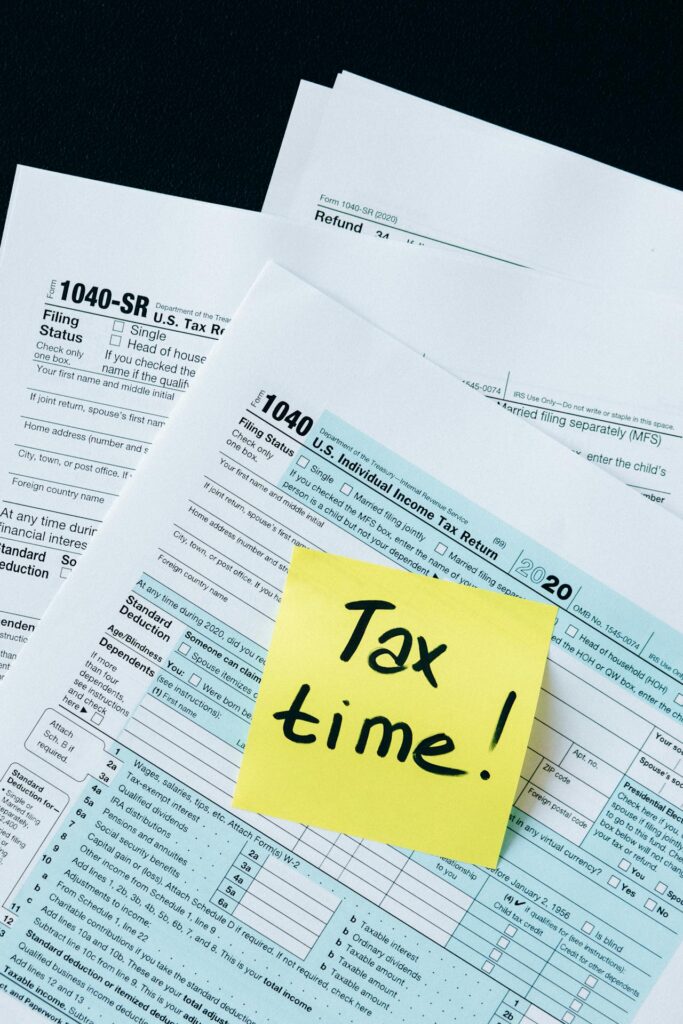Table of Contents
ToggleIntroduction
In a progressively digital economy, leveraging data has become a principal in almost every field, and taxation is no concession. Tax Analytics is emerging as a crucial tool for governments and businesses, offering significant improvements in efficiency, compliance, and strategic planning. This tool is intricately linked with Data Analytics, utilizing similar methodologies to harness data for actionable insights. Tax Analytics not only enhances tax compliance analytics but also plays a pivotal role in tax fraud detection and risk assessment in taxation.
By integrating Data Analytics into the fiscal framework, authorities and corporations can optimize their audit strategies through audit selection algorithms, predict future trends with tax revenue forecasting, and refine policies using tax policy analysis. This article delves into the role of Tax Analytics, its applications, and the potential it holds for transforming the taxation landscape, ensuring that every step from data collection to policy formulation is driven by data-informed decisions.

What is Tax Analytics?
Applying data analysis methods to sort through, understand, and use tax data to enhance decision-making processes is known as Tax Analytics. To turn raw data into a strategic asset, this field critically integrates machine learning, statistical techniques, and big data technology. Through the use of these cutting-edge analytical techniques, Tax Analytics gives stakeholders the ability to identify operational inefficiencies, evaluate compliance concerns, and gain deeper insights into financial patterns. Effective tax administration and strategy depend on the insights obtained by Tax Analytics, which offer a thorough understanding that supports better-informed, data-driven tax decision-making.

Applications of Tax Analytics
Enhanced Compliance and Reduced Fraud
Mitigating fraud and guaranteeing tax compliance are two of Tax Analytics’ main uses. Large-scale datasets are analyzed by sophisticated algorithms to find anomalies, strange transactions, and trends that can point to fraud. Tax Analytics offers a proactive approach to fraud prevention by utilizing data analysis techniques. This improves the accuracy of tax filings and ultimately reduces expenses associated with audits and penalties. This capacity enables tax authorities to improve the way they implement compliance tactics, resulting in more effective adherence to tax legislation by individuals and organizations. The ability to identify and stop fraudulent activity is further improved by the integration of big data technologies and machine learning, which makes Tax Analytics a vital instrument in contemporary tax administration.
Strategic Audit Selection
Traditionally, tax authorities have chosen audits using preset criteria or random sampling, which may not necessarily identify high-risk instances. By employing predictive models to identify returns that are most likely to have problems or show questionable activities, Tax Analytics makes it possible to take a more strategic approach. The efficiency of tax administration is improved and resources are optimized by this focused audit selection. By utilizing Data Analytics, tax authorities can concentrate their efforts on audit cases with the greatest likelihood of non-compliance by prioritizing them based on risk assessment. This increases the effectiveness of the audit procedure while guaranteeing that tax authorities can deal with compliance-related concerns more thoroughly.
Optimizing Tax Policy and Administration
Governments can model the consequences of proposed changes and evaluate the impact of current tax laws by using Tax Analytics. Policymakers can create policies that optimize revenue without impeding economic growth with the use of data-driven insights. Governments can determine the most effective tax incentives and address areas where compliance needs to be strengthened by utilizing financial patterns resulting from data analysis and tax policy analysis. Tax Analytics makes it possible to formulate tax policies with more knowledge by ensuring that choices are supported by thorough and reliable data. A more effective and fair tax system is made possible by the use of Data Analytics in the procedures involved in establishing policy.
Forecasting and Revenue Prediction
Forecasting future tax collections is essential for budgetary planning and maintaining fiscal stability, and Tax Analytics plays a key part in this process. Tax models can more accurately forecast revenue by taking into account economic variables and trend analysis. At the corporate and national levels, this foresight facilitates improved financial planning and administration. By utilizing predictive modeling and tax revenue forecasting, authorities can anticipate shifts in tax collection and modify their tactics accordingly. Businesses and tax authorities may plan more confidently for the future with the use of Data Analytics, which gives them the ability to comprehend and forecast financial patterns.
Applications for Tax Analytics are numerous and include everything from improving compliance and fraud detection to tax policy and audit selection optimization. Tax Analytics provides strong instruments for modernizing tax administration and guaranteeing more effective and efficient tax systems through the integration of Data Analytics and the utilization of big data technology.
Challenges and Considerations
Data Privacy and Security
Providing privacy and security for data is one of the main implementation challenges for Tax Analytics. Cyberattacks frequently target tax data because they contain sensitive financial and personal information. It is necessary to warrant the security and reliability of this data to uphold public certainty and faithfulness. To protect this vulnerable data, robust security measures are required, such as encryption, secure access protocols, and frequent security considerations. Devotion to data privacy laws such as the CCPA and GDPR is also necessary to stay out of legal hot water and preserve the integrity of the tax system.
Complexity of Tax Laws
Another significant barrier is the complexity of tax laws and regulations. Developing precise and up-to-date analytical models is difficult due to the often complex and changing nature of tax legislation. To reflect the most recent changes in the economy and regulations, these models need to be updated and modified frequently. Data scientists and tax specialists need to work very hard to ensure that Tax Analytics solutions remain relevant and helpful.
Data Quality and Integration
For Tax Analytics to be efficient, comprehensive and high-quality data must be available. Ineffective data quality can be identified by its accuracy, consistency, and missing information, all of which have a detrimental effect on the reliability of analytical findings. To guarantee data quality, extensive data cleansing, validation processes, and the integration of data from several sources are all required. For a thorough study, combining multiple data sources—like public databases, company financial records, and third-party information—can be challenging technically.
Adoption and Implementation
Tax Analytics uptake and use may be hampered by organizational reluctance to change. Concerns about expenses, complexity, and the need to make significant changes to current processes may prevent corporations and tax authorities from implementing new technology. Executing successful change management strategies, such as education and training programs, is necessary to cultivate a culture that incorporates data-driven decision-making. Showcasing the substantial benefits of Tax Analytics, such as higher agreement and cost savings, can also help overcome concerns.
Technical Expertise
To create and run Tax Analytics systems, one needs specialized technological expertise in areas such as big data technology, machine learning, and Data Analytics. Experts who possess the necessary skills to design, implement, and manage these systems are often hard to come by. Working with outside experts or providing financing for training and development programs to boost internal capabilities are two ways to address this skills gap.
Ethical Considerations
The application of Tax Analytics also raises significant ethical issues. It is crucial to make sure that the models and data utilized in tax analysis do not unintentionally generate biases or treat particular groups unfairly. Regular audits of analytical models and transparent techniques can help identify and minimize any biases. The relevance of Tax Analytics should be governed by ethical norms and guidelines to ensure that it is used in a just and fair manner.
Keeping Pace with Technological Advancements
The quick advancement of technology poses a challenge to the continuous improvement of Tax Analytics systems. It is vital to stay current with the latest developments in machine learning, big data, and Data Analytics to ensure their continued use. Investing in research and development, fostering an innovative culture, and normally updating systems are essential strategies to ensure Tax Analytics remains at the forefront of technical innovation.

Although tax analytics has many benefits, several problems and considerations should be considered. By resolving issues with data privacy, tax law complexity, data quality, adoption, technical proficiency, moral concerns, and technological advancements, stakeholders can fully realize the potential of Tax Analytics. This rigorous process ensures that using Data Analytics in tax administration advances efficiency and compliance while upholding the highest standards of security, justice, and innovation.
The Future of Tax Analytics
Looking ahead, tax analytics has a bright future with the potential to drastically change the way tax administration and policy are done. Technology breakthroughs, rising data quantities, and the significance of data-driven decision-making mean that Tax Analytics will only become more crucial to successful and efficient tax systems.

Here are some key trends and developments that are likely to shape the future of Tax Analytics:
Advanced Predictive Analytics
Predictive analytics models will be progressively complex in the future, utilizing machine learning (ML) and artificial intelligence (AI) to predict compliance issues, identify abnormalities, and estimate tax revenues more precisely. These models will take into account real-time data from multiple traces, including financial connections, social media trends, and efficient indicators, in addition to previous tax data. This will make it possible for companies and tax authorities to proactively adjust their strategy in anticipation of developments.
Real-Time Data Processing
Real-time data processing technology will enable Tax Analytics to advance and offer prompt insights and solutions to new trends and compliance problems. This change will make it possible to continuously monitor and analyze tax-related actions, giving authorities the ability to respond quickly to possible fraud or non-compliance and giving businesses access to current information for decision-making.
Blockchain Technology
Blockchain technology offers a transparent and safe ledger for recording transactions, which has the potential to completely transform tax administration. Guaranteeing the validity and traceability of financial transactions can drastically lower fraud and tax avoidance. When Tax Analytics and blockchain are combined, the accuracy of tax reporting and compliance verification can be improved, making the tax system more reliable and effective.
Enhanced Data Integration
Better techniques for combining various data sources will be available in the future, enabling a more thorough examination of tax data. This will entail merging information from financial institutions, global tax networks, government databases, and third-party service providers. Improved data integration will make it easier to see taxpayer activity holistically and will make it easier to spot intricate tax evasion schemes that cut across several jurisdictions.
Personalized Taxpayer Services Tax Analytics
will make it possible to offer taxpayers individualized services. Authorities can provide customized guidance, and reminders, and help to guarantee compliance and maximize tax requirements by evaluating individual taxpayer data. By providing personalized services, the tax system will become more transparent and user-friendly while also increasing taxpayer participation and satisfaction.
Improved Policy Formulation
Future tax laws will be largely shaped by data-driven insights obtained from Tax Analytics. Before implementing changes to policies, policymakers will be able to evaluate the possible effects of those changes through modeling different scenarios. This will result in more fair and efficient tax laws that strike a balance between raising money and promoting social welfare and economic expansion.
Ethical and Transparent Analytics
Transparency and ethical issues will receive more attention when Tax Analytics is used more widely. It will be essential to create frameworks to guarantee that analytics models are objective and do not disproportionately affect particular groups. Fair implementation of tax rules and public trust will result from transparent techniques and algorithms.
Increased Collaboration and Knowledge Sharing
International organizations, corporations, and tax authorities will work together more in the future of tax analytics. It will be easier to handle worldwide tax difficulties as a group if best practices, analytical methods, and data are shared. Global tax systems will become more innovative and more successful overall as a result of collaborative platforms and activities.
Skilled Workforce Development
A workforce with expertise in data science, analytics, and tax law will be increasingly necessary to realize the full potential of tax analytics. To acquire the required skills, investments in education and training programs will be crucial. To draw in top talent in these fields, organizations might also need to reconsider their approaches to hiring and retaining employees.
Tax analytics has a bright future ahead of it, full of new developments and inventions. Tax Analytics will become an ever more potent tool for boosting tax compliance, streamlining policy decisions, and raising the general effectiveness of tax systems as technology advances. By tackling present obstacles and seizing novel prospects, interested parties can guarantee that Tax Analytics stays at the vanguard of contemporary tax management, resulting in favorable consequences for corporations, governments, and individuals filing taxes.

Conclusion
As we’ve seen, Tax Analytics has a bright future ahead of it and has the potential to alter how tax systems function around the world. Tax Analytics is poised to improve the accuracy, efficacy, and security of tax administration and compliance through the incorporation of cutting-edge technologies like blockchain, AI, and ML. The drive for improved data integration and real-time data processing will facilitate more proactive and knowledgeable decision-making, enabling tax authorities and companies to adjust to changes in the economy and legal requirements quickly.
Furthermore, the possibility of tailored taxpayer services highlights a change in tax systems toward a user-centric strategy that boosts happiness and compliance while also developing a stronger sense of systemic trust. It is impossible to overestimate the importance of moral and open behavior in tax analytics since it promotes equity and keeps the public’s confidence in the use of data to shape tax laws.
Global tax difficulties will require cooperation and knowledge exchange from stakeholders as they continue to negotiate the intricacies and utilize Tax Analytics. Investing in staff with the necessary skills to navigate the complexities of tax law and data analytics will enable tax systems to better address difficulties in the future.
Tax Analytics’ development is evidence of how technology can revolutionize an industry by enhancing its efficiency, transparency, and equity. As time goes on, it is evident that adopting these modifications will be essential for those aspiring to hold leadership positions in the field of taxes. This will guarantee that they not only stay up with the latest technology developments but also promote the values of creativity and equity in tax management.


